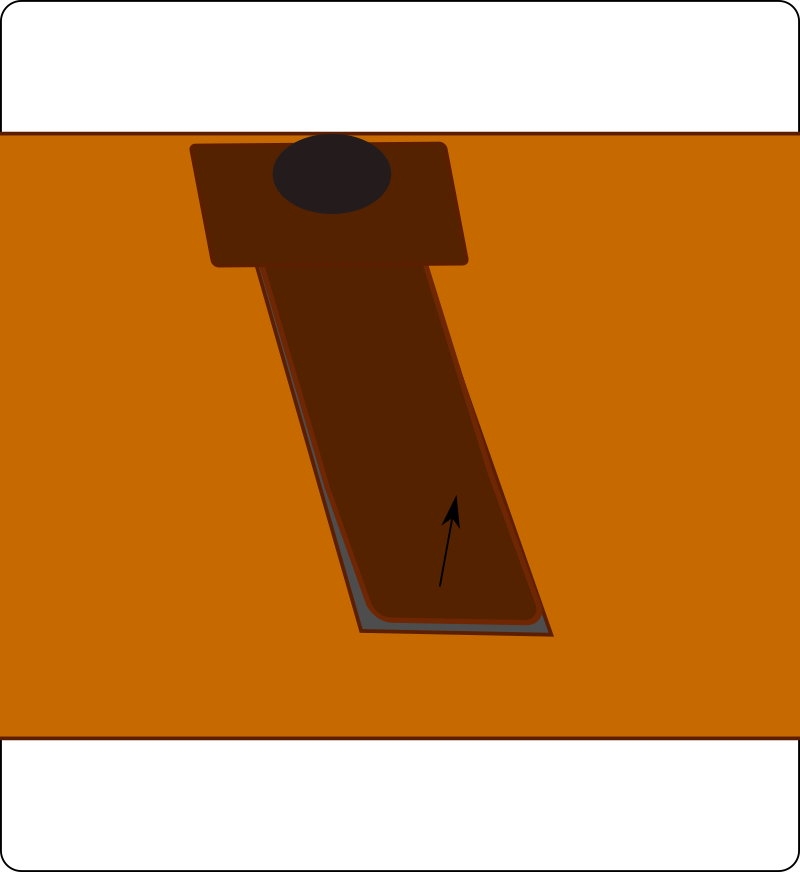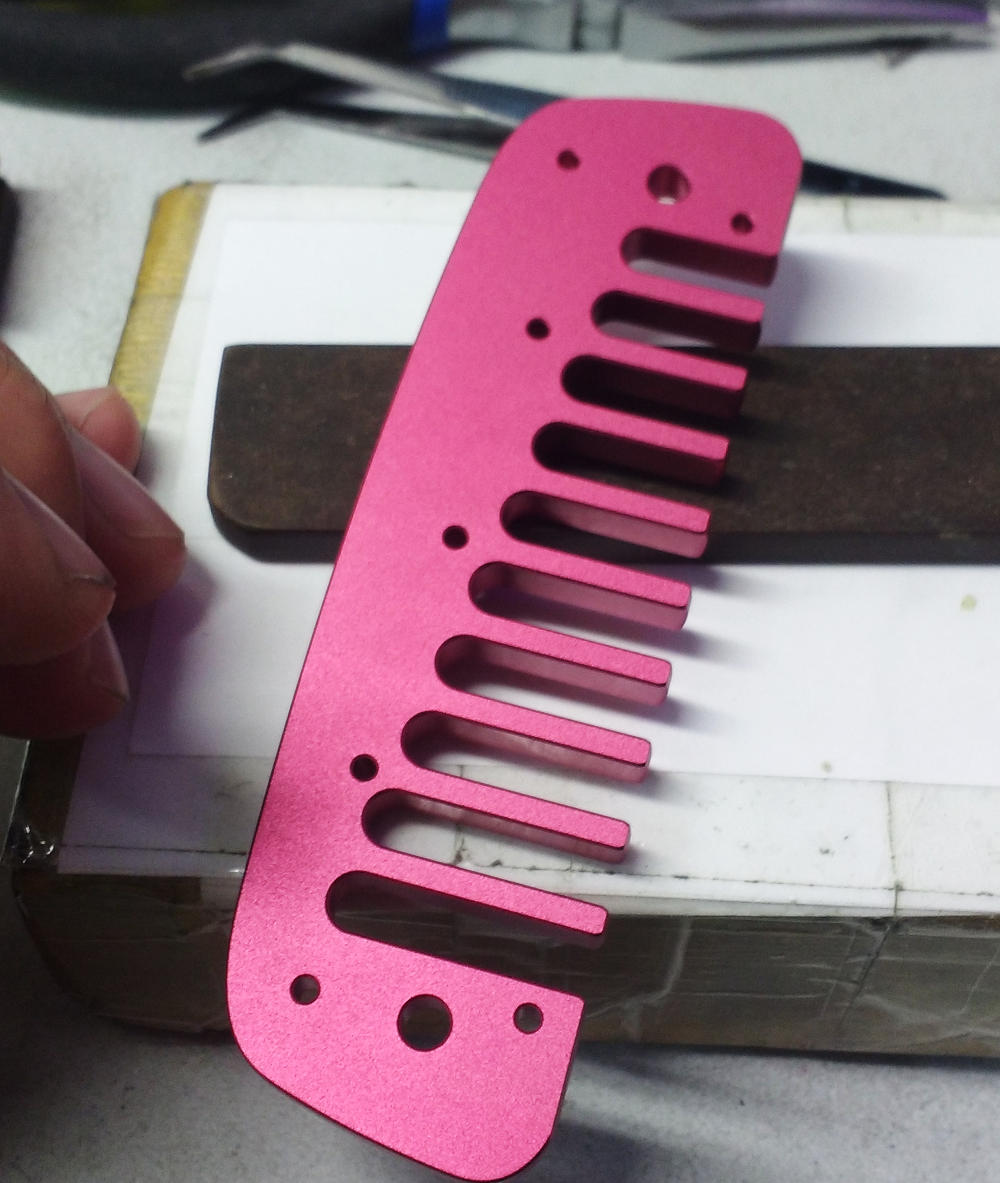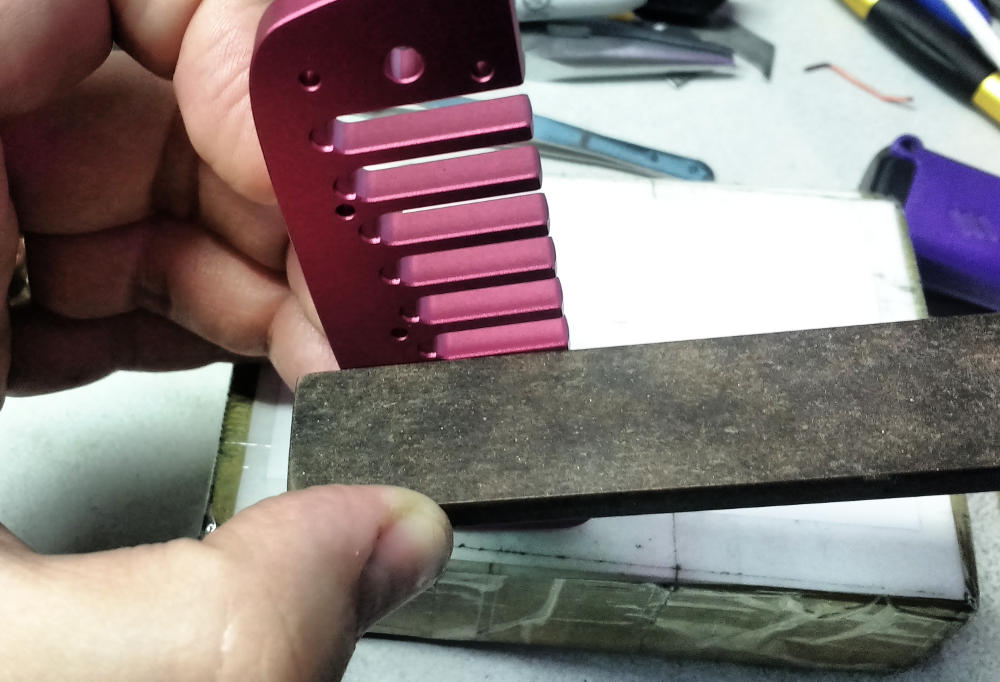Reedwork is the work we do to make the shape of the reed such that it passes through the slot in the best possible way. The reed is curved at rest and will straighten out at the exact moment is travels through the slot.
Reedword is very precise work. It takes time.
All the time and effort to do reed work is wasted if the slots are not straight or level.
This is a reed at rest:

This is the reed the moment it travels through the slot. It's well set up and the most of the reed passes through the slot at the exact same time:

Framework is the work we do to make the slot perfectly straight and level. The slot is simply the rectangular hole in the reed plate.

If the reed plate or comb is curved front-to-back, that will mean that the slots will be curved too. The reed doesn't stand a chance of passing through perfectly under these conditions:

Not to mention this can also cause an air leak which will make the harp feel stiff.
Likewise, if the reed plate or comb is warped or bumpy left-to-right, one side of the slot will be higher than the other - again the reed will never pass through the slot optimally.

When I upgrade a harmonica's comb, the goal is to provide a foundation for the framework. If the comb is defective, you will never get the harp to provide a wide dynamic range or deliver its maximum tone.
This is an example of a comb that is bright and shiny on the surface but it lacks the fundamental qualities we really need. It's made of aluminium. I have never found an aluminium comb that meets my standards.

Its tines are very thin and don't provide a lot of surface contact.

But most importantly, it's bowed front-to-back. I measured flatness. This thing leaks air and has rotten tone. The tone is bright but thin.

I'm using my flatness tool™ as a reference. The light you see between the tool and the comb is where it's bowed.
Here is what the comb look like after being properly flattened:
